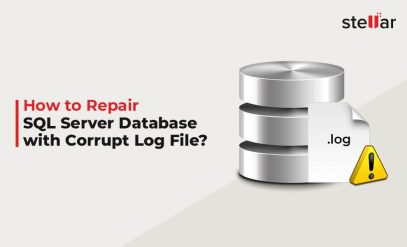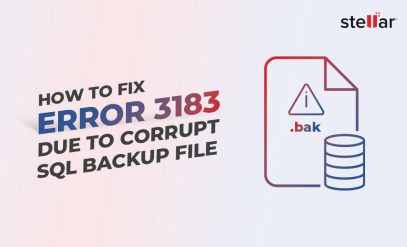| Summary: Have you ever encountered SQL Server Database Error 829? If so, you’re not alone. This pesky error can be frustrating and disruptive to your database operations. But fear not! In this blog post, we’ll delve into the causes of Error 829 and provide you with step-by-step solutions to fix it. Whether you’re a seasoned SQL Server user or just starting, our expert tips will help you resolve this issue quickly and efficiently. |
|---|
What Causes SQL Server Database Error 829?
When it comes to SQL Server database errors, error code 829 is one that can cause frustration for many users. So, what exactly causes this error to occur? Let’s dive in and explore some of the possible reasons.
One common cause of error 829 is an inconsistency within the database pages. This could be due to a hardware failure or an issue with the storage system. When these inconsistencies arise, they can disrupt the normal functioning of the database and lead to error messages like 829.
Another potential culprit behind this error is corruption within the transaction log file. If there are any issues with writing or reading data from this log file, it can result in error code 829 being thrown. Furthermore, if there are any problems with accessing or modifying certain tables or indexes within the database, it can trigger this particular error message.
Inadequate disk space can also contribute to the occurrence of error 829. If there isn’t enough disk space available for SQL Server to perform its operations smoothly, it may encounter errors such as this one. Now that we have explored some of the possible causes of SQL Server database error 829 let’s move on to discussing how you can fix it and prevent future occurrences.
Also read, How to Recover SQL Server Database with Corrupt Log File?
Steps to Fix SQL Server Database Error 829
Encountering an error in your SQL Server database can be frustrating, but fear not! There are steps you can take to fix the dreaded Error 829. Here’s what you need to do:
1. Identify the Cause: The first step is to understand why this error occurred in the first place. Error 829 usually occurs when there is corruption in the database pages or if there is an issue with the disk subsystem.
2. Run DBCC CHECKDB: Once you have identified the cause, it’s time to run the DBCC CHECKDB command on your affected database. This command checks for any inconsistencies and repairs them automatically.
Additional reading, How to Repair Database if DBCC CHECKDB doesn’t Work?
3. Restore from Backup: If running DBCC CHECKDB doesn’t resolve the issue, it might be necessary to restore your database from a backup file. Make sure you have a recent backup available before proceeding with this step.
4. Use Stellar Repair for MS SQL: In case you don’t have a backup or if restoring from a backup doesn’t work, another option is to use a reliable tool like Stellar Repair for MS SQL. This software can effectively repair corrupt databases and recover all your precious data.
Read, complete working of stellar repair for MS SQL
5. Seek Professional SQL Repair Services: If all else fails, it may be wise to seek assistance from a professional SQL services provider who specializes in SQL Server databases and troubleshooting errors like Error 829. By following these steps, you’ll increase your chances of fixing SQL Server Database Error 829 and getting back on track with your database operations.
Prevention Tips for Future Errors
To avoid encountering SQL Server Database Error 829 in the future, there are a few preventive measures you can take. First and foremost, regularly perform database maintenance tasks such as checking for inconsistencies and repairing any corrupt pages. This will help identify potential issues before they escalate into bigger problems.
It’s also crucial to ensure that your hardware and storage systems are functioning optimally. Keep disk space available and make sure it doesn’t reach critical levels. Running out of disk space can lead to data corruption and ultimately result in Error 829.
Regularly backing up your databases is another important step towards preventing errors like this one. Having reliable backups allows you to restore your data in case of any unforeseen circumstances or system failures.
Furthermore, keeping your SQL Server software up-to-date with the latest patches and updates is vital. These updates often include bug fixes that can address known issues related to error handling or page allocation.
Also read, SQL Server Error 4064: A Deep Dive into Causes and Solutions
Implementing proper security measures is essential to prevent unauthorized access or malicious activities that may trigger database errors. Regularly monitor user activity logs and promptly address any suspicious behavior.
By following these prevention tips, you can minimize the chances of encountering SQL Server Database Error 829 and keep your database running smoothly without interruptions!
Conclusion
SQL Server Database Error 829 can be a frustrating issue to encounter, but with the right knowledge and tools, it can be resolved effectively. By following the steps outlined in this article, you will be able to resolve Error 829 and get your database back up and running smoothly.
However, it’s important to remember that prevention is key. Regularly backing up your database, performing routine maintenance tasks such as index rebuilds, monitoring disk space usage, and keeping your system updated with the latest patches are all essential practices that can help prevent errors like 829 from occurring in the first place.
Additional reading, How to Repair Corrupted SQL Server Database?
If you find yourself unable to fix SQL Server Database Error 829 using the methods described here or if you want a more automated solution, consider using a reliable third-party tool like Stellar Repair for MS SQL. Such tools are designed specifically to handle database corruption issues efficiently and effectively.
Remember that when dealing with any kind of database error or issue, seeking professional assistance is always recommended. Experienced professionals have specialized knowledge and expertise that can help diagnose complex problems quickly and accurately.









